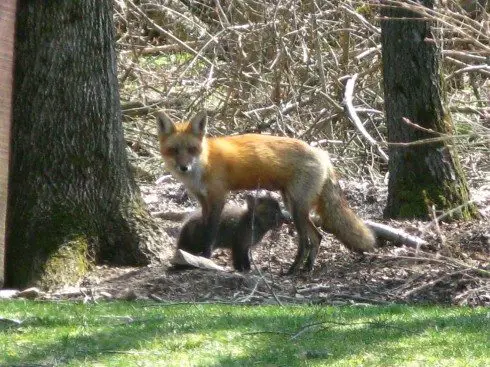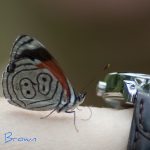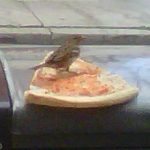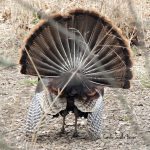A while back, my friend Karyn Greenstreet sent me some photos of a Red Fox making himself at home in her wildlife garden, and she had named him Mr. Fox.
But now, all things have become clear!
Mr Fox is not a Mister at all.
Hey! Mr Fox is really *Mrs* Fox. Four cubs/kits came out of their den this week!
Because now Mrs Fox has four fox kits following her around and playing in Karyn’s garden.
The ultimate in office distractions — I keep looking out of my office window to see if Mrs. Fox and her kits are playing in the yard. Will I get *any* work done today??
Enjoy Karyn’s distractions in her garden!
The Red Fox (Vulpes vulpes) is a widespread and adaptable mammal found throughout much of the world, including North America. They are medium-sized foxes, with distinctive rusty-red fur, long, bushy tails, and large, pointy ears.
Red Foxes are omnivores and feed on a variety of food, including small mammals, birds, insects, fruits, and vegetables. They are also known for their intelligence and cunning, making them skilled hunters and survivors.
In terms of wildlife gardens, Red Foxes can both benefit from and be a potential problem for these types of spaces. On the one hand, Red Foxes can provide a unique opportunity to observe and enjoy these fascinating mammals in an urban setting. On the other hand, they can also pose a threat to smaller garden animals, such as birds and small mammals, as well as to fruits and vegetables.
To minimize any potential conflicts with Red Foxes in your wildlife garden, it’s a good idea to protect vulnerable plants and animals with protective structures, such as birdhouses with predator guards and raised garden beds. Additionally, avoid feeding the foxes, as this can habituate them to humans and increase the likelihood of conflict.
More From Ecosystem Gardening:
Submit your review | |








